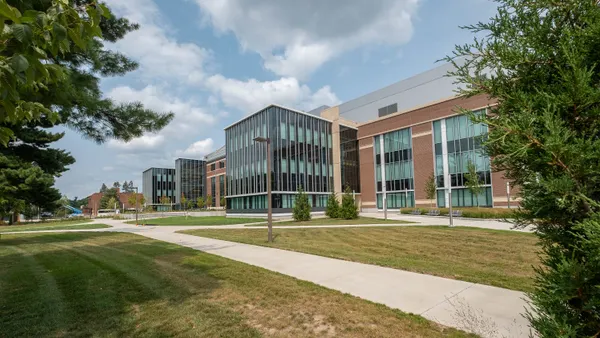Dive Brief:
-
Skanska USA has introduced a new open-source database tool, the Embodied Carbon in Construction Calculator (“EC3”), which estimates and evaluates the carbon emissions contained within a variety of construction materials. The more than 30 backers for the EC3 tool and its incubator include Skanska, Microsoft, Charles Pankow Foundation, MKA Foundation, Autodesk and Interface.
-
Stacy Smedley, regional director of sustainability for Skanska USA in Seattle, first researched the concept and established embodied carbon benchmarks. Then, the general contractor worked with software developer C Change Labs to develop the EC3. The searchable database is based on environmental product declaration (EPD) data and has a list of more than 16,000 materials — including concrete, steel and gypsum — categorized by performance requirements, design specification, project location and global warming potential.
-
The EC3, which allows owners, contractors and designers to easily establish a project's carbon footprint, is currently undergoing pilot testing, and, thus far, has helped participating projects to achieve embodied carbon reductions of up to 30% with little to no cost impact. The EC3's official release is scheduled for Nov. 19.
Dive Insight:
The assessment of a building's carbon emissions typically focuses on operational carbon, or a building's energy efficiency and consumption, according to Skanska. Embodied carbon emissions, however, are those related to a building's construction, including the extraction, transportation and manufacture of materials. Analyzing embodied carbon emissions, according to Skanska, enables project teams to reduce a building's carbon footprint before construction is complete.
According to C Change Labs, the manufacture of construction materials will make up as much as 80% of a new commercial building's climate impact between now and 2030.
Even so, some material producers have already been trying to reduce the environmental impact of materials like cement. For instance, LafargeHolcim and Solidia Technologies announced in August that a new U.S. joint venture between the two will offer reduced CO2 cement for precast concrete production. The new cement uses a low-temperature binder, as well as a patented curing process that uses CO2 rather than water. With the addition of CO2, Solidia Concrete reaches strength in less than 24 hours unlike 28 days when using precast concrete made with Portland cement. In addition, Solidia reduces the carbon footprint of precast concrete by 70% and lowers the cement plant’s carbon emissions by up to 40%.
Mass timber is another building material with attractive environmental attributes. According to The Climate Trust, while concrete emits carbon dioxide — about 1 ton per an equal amount of the material — mass timber sequesters it. Mass timber and all its varieties — i.e. cross-laminated timber, nail-laminated timber, glue-laminated timber, laminated strand lumber and laminated veneer lumber — are being incorporated into more project designs, but developers often run into roadblocks with local building departments around fire safety issues when they try to build tall structures.
Mass timber proponents argue that in the event of a fire, mass timber chars and burns slowly giving more time for those inside to evacuate than even steel does in certain circumstances. The International Code Council will include tall wood building construction in its next version of the code, but only a smattering of jurisdictions, like Portland, Oregon, and Milwaukee, have approved such projects.













